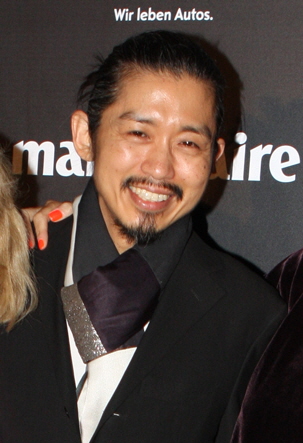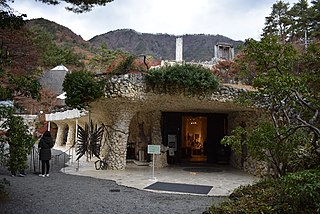Related Research Articles

There are typically two types of clothing worn in Japan: traditional clothing known as Japanese clothing, including the national dress of Japan, the kimono, and Western clothing, which encompasses all else not recognised as either national dress or the dress of another country.

Dame Barbara Mary Quant was a British fashion designer and fashion icon. She became an instrumental figure in the 1960s London-based Mod and youth fashion movements, and played a prominent role in London's Swinging Sixties culture. She was one of the designers who took credit for the miniskirt and hotpants. Ernestine Carter wrote: "It is given to a fortunate few to be born at the right time, in the right place, with the right talents. In recent fashion there are three: Chanel, Dior, and Mary Quant."

Cristóbal Balenciaga Eizaguirre was a Spanish fashion designer, and the founder of the Balenciaga clothing brand. He had a reputation as a couturier of uncompromising standards and was referred to as "the master of us all" by Christian Dior and as "the only couturier in the truest sense of the word" by Coco Chanel, who continued, "The others are simply fashion designers". On the day of his death, in 1972, Women's Wear Daily ran the headline "The King is Dead".

Akira Isogawa is an Australian contemporary fashion designer.

Nicholas David Gordon Knight is a British fashion photographer and founder and director of SHOWstudio.com. He is an honorary professor at University of the Arts London and was awarded an honorary Ph.D. by the same university. He has produced books of his work including retrospectives Nicknight (1994) and Nick Knight (2009). In 2016, Knight's 1992 campaign photograph for fashion brand Jil Sander was sold by Phillips auction house at the record-breaking price of HKD 2,360,000.

Yohji Yamamoto is a Japanese fashion designer based in Tokyo and Paris. Considered a master tailor alongside those such as Madeleine Vionnet, he is known for his avant-garde tailoring featuring Japanese design aesthetics.

Itchiku Kubota (1917–2003) was a Japanese textile artist. He was most famous for reviving and in part reinventing an otherwise lost late 15th- to early 16th-century textile dye technique known as tsujigahana, which became the main focus for much of his life's work. As homage to the original tsujigahana technique and its legacy, he named the technique 'itchiku tsujigahana'.

Jean-Charles, marquis de Castelbajac, also known as JC/DC, is a French fashion designer. He has enjoyed international success with some of his creations, including a coat of teddy bears worn by pop star Madonna and by supermodel Helena Christensen in the film Prêt-à-Porter and a sequin jacket for Beyonce, and a Donald Duck costume for Rihanna. During his career he has befriended and worked with artists such as Andy Warhol, Keith Haring, Jean Michel Basquiat, Malcolm McLaren, Robert Mapplethorpe, M.I.A, Cassette Playa, Curry & Coco, The Coconut Twins and Lady Gaga.
Jōtarō is a male Japanese given name.

Manish Arora is an Indian fashion designer based in New Delhi. In early 2011, he was appointed creative director of the womenswear collection of the French fashion house Paco Rabanne, although he left the company in May 2012.
Ikko Tanaka was a Japanese graphic designer.

Kansai Yamamoto was a Japanese fashion designer, most influential during the 1970s and 1980s.

Yeohlee Teng is an American fashion designer originally from Malaysia and of Chinese heritage. She received the Smithsonian's Cooper-Hewitt National Design Award for fashion design in 2004. Her work has been displayed at the Metropolitan Museum of Art, New York and Victoria & Albert, London.

Noritaka Tatehana is a Japanese shoe designer born into a family that ran a public bathhouse. He studied fine arts, Japanese craft, dyeing, and weaving at the Tokyo University of the Arts.

Kunihiko Moriguchi is a Japanese textile artist who specializes in the yūzen dyeing technique. He is a Living National Treasure of Japan.
Yoshikimono is a kimono fashion brand created by Japanese rock musician Yoshiki. After its debut at Asia Girls Explosion in 2011, the brand has been featured as a headliner presentation at Tokyo Fashion Week including the Mercedes-Benz Fashion Week Tokyo 2016, Amazon Fashion Week Tokyo 2017, and Rakuten Fashion Week Tokyo 2020, receiving critical acclaim for its modern approach to Japan's traditional garment.

The Khalili Collection of Kimono is a private collection of more than 450 Japanese kimono assembled by the British-Iranian scholar, collector and philanthropist Nasser D. Khalili. It is one of eight collections assembled, published and exhibited by Khalili, each of which is considered to be among the most important collections within their respective fields.

The Gymnastics Samurai is a Japanese anime television series about gymnastics. The series was produced by MAPPA, written by Shigeru Murakoshi and directed by Hisatoshi Shimizu. Character designs were created by Kasumi Fukagawa, and the music its composed by Masaru Yokoyama. The series aired from October to December 2020 on TV Asahi's NUMAnimation block.

Serge Mouangue is a Cameroonian born designer and artist, based in Paris, France. He has worked in various design fields and is known for his series of Japanese/Cameroonian art pieces, from which he has gained notoriety in the art world. His art style is based upon ideas of shared belonging, identity, and the similarities between cultures.
Yumi Katsura is a Japanese fashion designer known for designing wedding dresses. She has been active in the fashion industry for over five decades, and her work has been featured in various fashion shows and events. Katsura's designs are known for their unique blend of traditional Japanese techniques and French savoir-faire.
References
- ↑ sportoletti, gabriele. "JOTARO SAITO: ART OF KIMONO". Welum. Retrieved 2020-10-20.
- ↑ "Jotaro Saito". The Japan Times. Retrieved 2020-10-20.
- 1 2 3 4 "Kimono Fashion Can Be Cool — Trust Designer Jotaro Saito". JAPAN Forward. 2019-03-14. Retrieved 2020-10-20.
- 1 2 "V&A · Kimono inspired by the 'street': Jotaro Saito". Victoria and Albert Museum. Retrieved 2020-10-20.
- ↑ "Japan's kimono makers seek to revive industry with new designs, low prices". Hindustan Times. 2018-05-04. Retrieved 2020-10-20.
- ↑ "JOTARO SAITO | Rakuten Fashion Week TOKYO". rakutenfashionweektokyo.com. Retrieved 2020-10-20.